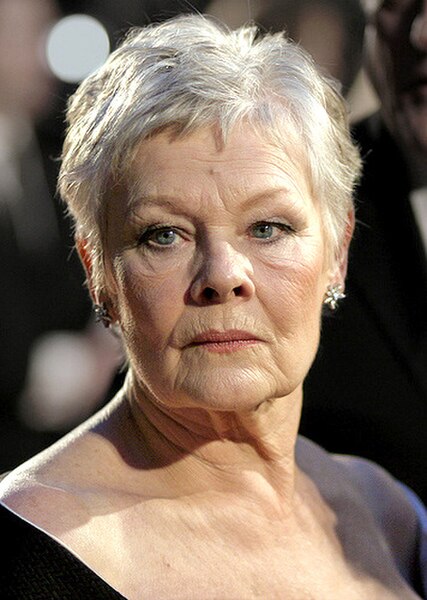007: Quantum of Solace is a 2008 shooter video game published by Activision. It is based on the James Bond films Casino Royale (2006) and Quantum of Solace (2008). It was developed by Treyarch for PlayStation 3 (PS3) and Xbox 360, while Beenox developed it for Microsoft Windows and Wii. The game is mostly played as a first-person shooter, but occasionally switches to third-person. Eurocom developed a similar version for the PlayStation 2 (PS2), played solely as a third-person shooter. An entirely different version, developed by Vicarious Visions for the Nintendo DS, is also played from a third-person perspective.
Image: Daniel Craig at a film premiere in New York b
Image: Judi Dench at the BAFT As 2007 (cropped)
GoldenEye 007 (1997 video game)
GoldenEye 007 is a 1997 first-person shooter video game developed by Rare and published by Nintendo for the Nintendo 64. Based on the 1995 James Bond film GoldenEye, the player controls the secret agent James Bond to prevent a criminal syndicate from using a satellite weapon. They navigate a series of levels to complete objectives, such as recovering or destroying objects, while shooting enemies. In a multiplayer mode, up to four players compete in several deathmatch scenarios via split-screen.
North American box art
When the player takes damage, red and blue bars are displayed on the game's HUD, representing Bond's health and armour levels respectively. Ammunition information is displayed at the bottom right corner.
An SGI Onyx graphics workstation was used during the first stages of development.
A variant of the Škorpion, which inspired the visual design of the Klobb






